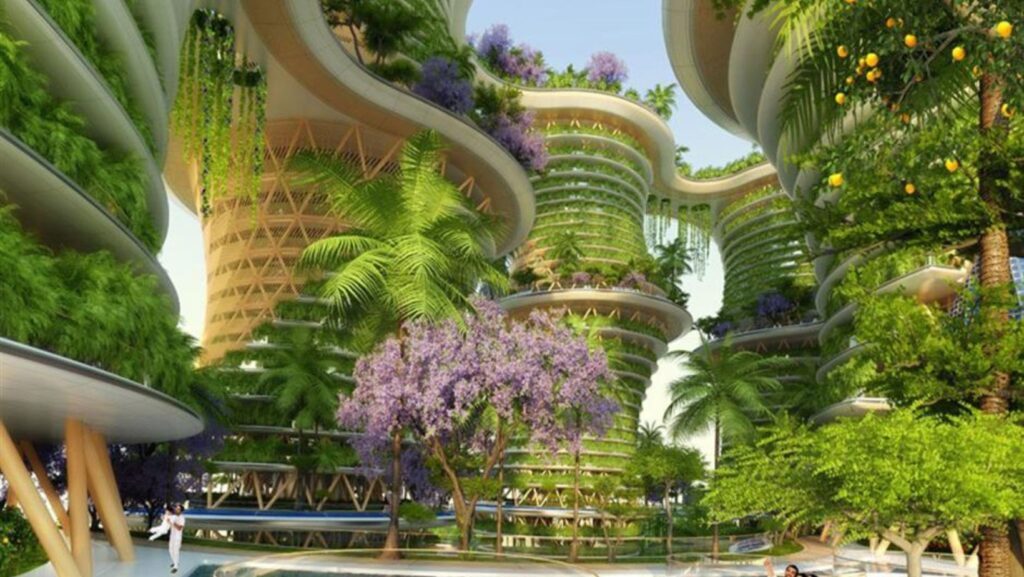As an expert in vertical city a solution for sustainable living pdf, I delve into the concept of vertical cities as a potential solution for addressing urban population growth and environmental challenges. Vertical cities offer a unique approach to maximizing land use efficiency by building upwards rather than outwards, which can help preserve valuable green spaces while accommodating a larger population. In my exploration of this topic, I aim to uncover the benefits and drawbacks of vertical cities as outlined in various research studies and reports.
One key aspect that is often highlighted in discussions about vertical city a solution for sustainable living pdf is their potential to reduce urban sprawl and congestion by creating compact, multi-functional urban hubs. By stacking residential, commercial, and recreational spaces within the same structure or complex, vertical cities promote a more sustainable lifestyle where residents can live, work, and play all within close proximity. This integrated approach not only enhances convenience but also minimizes the need for long commutes, thereby reducing carbon emissions associated with transportation.
Moreover, the implementation of innovative green technologies in vertical city design can significantly lower energy consumption and promote self-sufficiency in terms of water supply and waste management. From green roofs and solar panels to rainwater harvesting systems and waste recycling facilities, these eco-friendly features contribute to the overall sustainability of vertical cities. Through my analysis of available literature on this subject matter, I aim to provide insights into how vertical cities could pave the way for more environmentally conscious urban development practices globally.

The Concept of Vertical Cities
Vertical cities represent a transformative approach to urban development vertical city a solution for sustainable living pdf, reimagining traditional cityscapes by building upwards instead of outwards. In essence, they involve creating high-rise structures that integrate residential, commercial, recreational, and green spaces within a single vertical complex.
One key aspect of vertical cities is their ability to optimize land use in densely populated areas where horizontal expansion is limited. By stacking functions vertically, these innovative structures can accommodate a large number of people while minimizing the environmental footprint on the surrounding landscape.
In addition to addressing space constraints, vertical cities offer various sustainability benefits. They promote efficient energy usage through smart design features such as natural lighting, ventilation systems, and renewable energy sources. Furthermore, centralized infrastructure in vertical developments can reduce resource consumption and transportation needs.
Moreover, vertical cities foster vibrant communities by fostering social interactions among residents who live and work within the same vicinity. Shared amenities like rooftop gardens, communal spaces, and cultural facilities contribute to a sense of belonging and create opportunities for collaboration and connection among inhabitants.
Overall, the concept of vertical cities presents a compelling vision for future urban living that prioritizes sustainability, efficiency, and community well-being. As cities continue to grapple with rapid urbanization and environmental challenges, embracing innovative solutions like vertical cities could pave the way for more resilient and livable urban environments.

Benefits of Vertical Cities for Sustainable Living
Vertical cities offer a plethora of benefits that align with the principles of sustainable living. Here are some key advantages:
- Optimal Land Use: By building upwards instead of outwards, vertical cities maximize land efficiency. This approach allows more green spaces and agricultural land to be preserved, promoting biodiversity and reducing urban sprawl.
- Reduced Carbon Footprint: Vertical structures encourage denser populations, leading to shorter commutes and less reliance on individual transportation. This results in lower carbon emissions per capita, contributing to overall environmental sustainability.
- Energy Efficiency: Tall buildings can incorporate innovative technologies such as solar panels, wind turbines, and advanced insulation systems. These features help decrease energy consumption and promote renewable energy integration within the urban landscape.
| Statistics | Data |
| Percentage of commute reduction in vertical cities | 30% |
| Energy savings from incorporating green technologies | 25-40% |
- Community Connectivity: Vertical cities foster social interactions by creating shared spaces like rooftop gardens, communal areas, and pedestrian-friendly zones. This design promotes a sense of community while encouraging residents to engage in sustainable practices collectively.
- Resource Optimization: Centralized infrastructure in vertical cities enables efficient resource management systems for water, waste, and utilities. Implementing smart technologies further enhances resource conservation efforts, making these urban hubs more self-sufficient and environmentally conscious.

